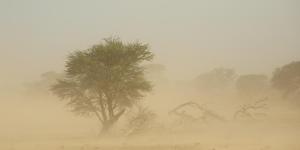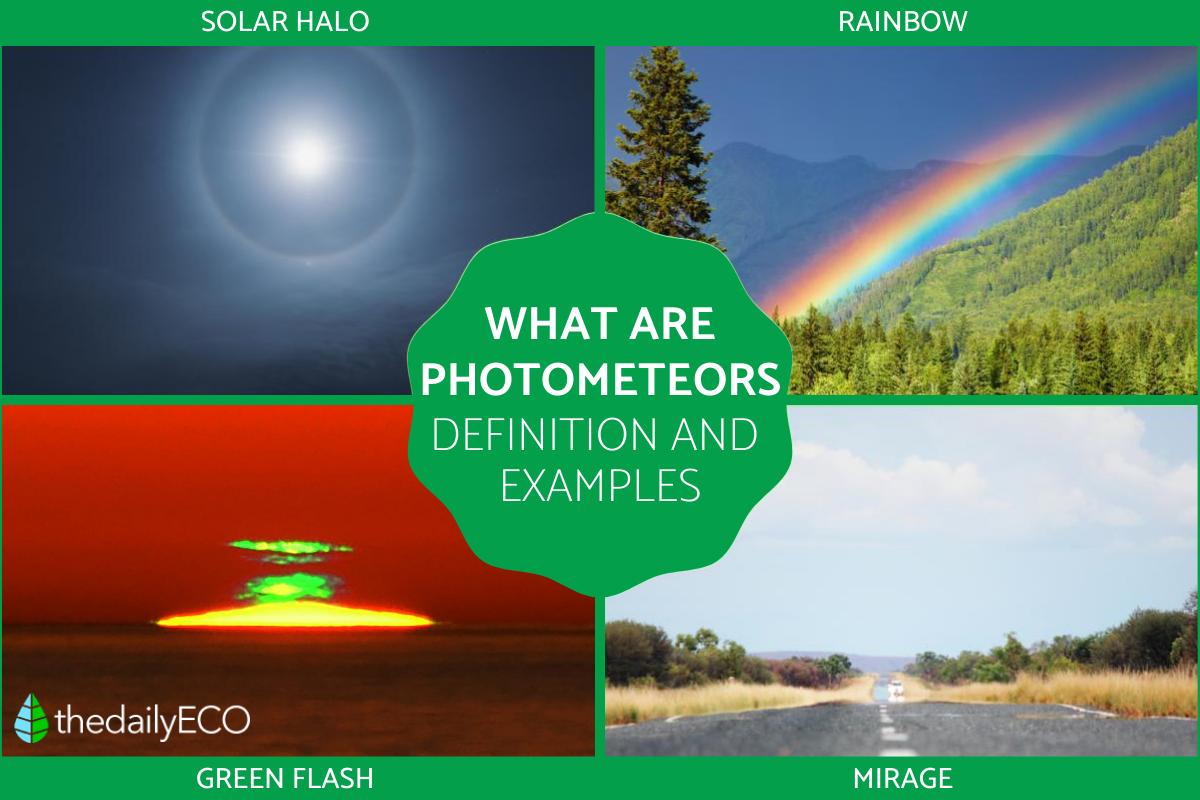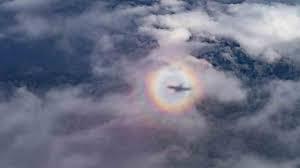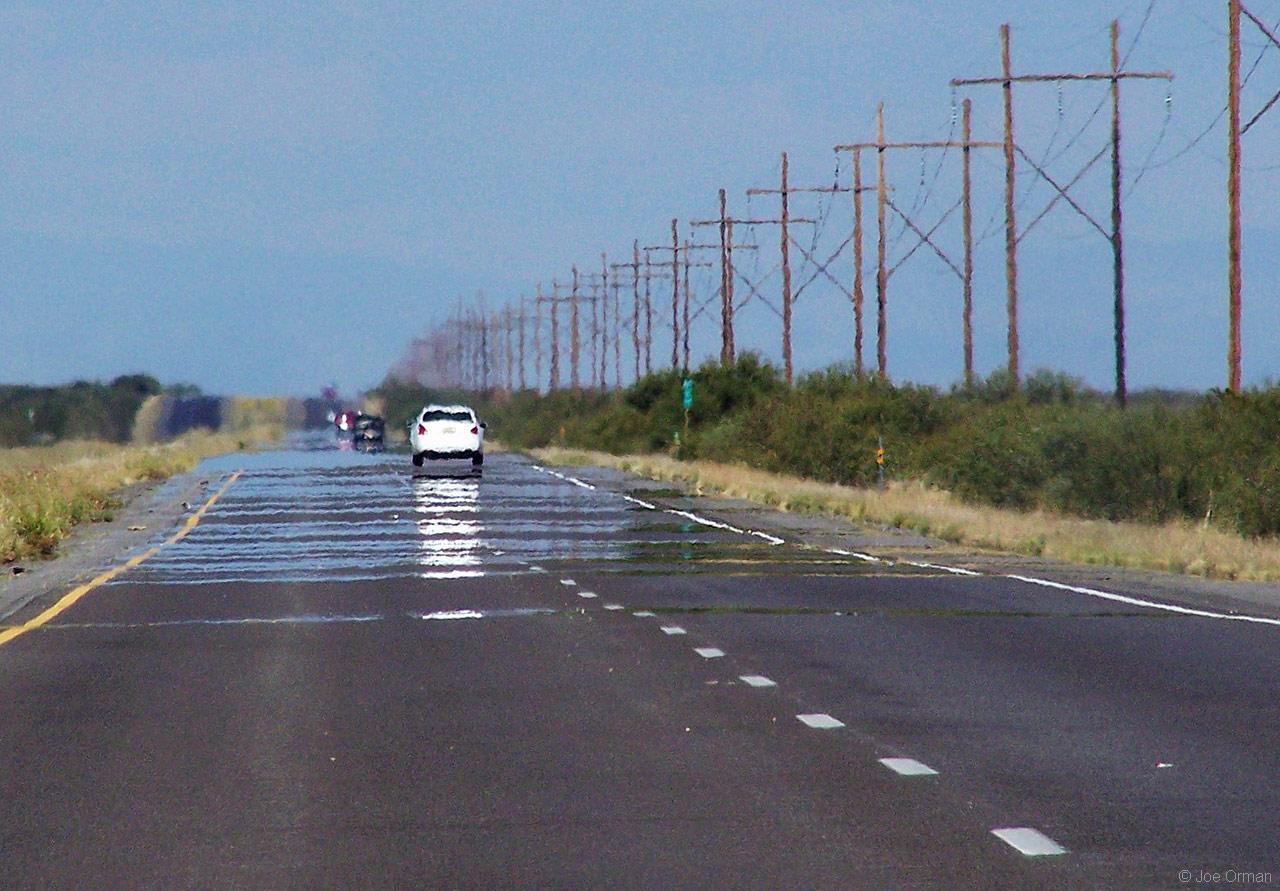What Are Photometeors?


Have you ever witnessed a vibrant rainbow arch across the sky, or perhaps seen an ethereal halo surrounding the sun? These captivating phenomena are known as photometeors. Photometeors are luminous atmospheric phenomena that arise from the interaction of sunlight or moonlight with atmospheric particles, including water droplets and ice crystals.
In the following article by the dailyECO, we will explore the nature of photometeors, their formation, and common examples.
What are photometeors?
Photometeors are a group of atmospheric phenomena visible from Earth's surface. These occur due to interactions between light, humidity, and atmospheric particles.
Common examples include rainbows (formed by sunlight refracting through water droplets), solar and lunar halos (caused by ice crystal refraction), and green flashes (seen during sunrise/sunset).
Other interesting but less frequent photometers include mirages (illusions of water in hot deserts), pillars of light (vertical shafts appearing near the sun/moon), iridescent clouds (showing rainbow colors due to diffraction), and auroras (light curtains in the polar night sky).
Solar and lunar halo
Solar and lunar halos are atmospheric phenomena characterized by luminous rings surrounding the sun or moon. These rings arise from the refraction and reflection of sunlight or moonlight by ice crystals suspended within high-altitude cirrus or cirrostratus clouds.
Light interacting with these ice crystals undergoes both refraction, where it bends, and dispersion, where it separates into its constituent wavelengths. While this separation creates a spectrum of colors, the small size and uniform distribution of the ice crystals cause these colors to merge, resulting in a diffuse halo rather than a distinct rainbow.
The specific size and shape of a halo depend on the characteristics of the ice crystals present, their concentration within the cloud layer, and the observer's relative position to the sun or moon. Solar halos typically reach diameters of up to 22 degrees, while lunar halos can be even larger due to enhanced light scattering in the nighttime atmosphere.
To delve deeper into the fascinating world of solar halos, explore our other article.

Rainbow
Rainbows are iconic atmospheric phenomena resulting from sunlight interacting with water droplets. These vibrant arcs form after rainfall when sunlight refracts, reflects, and disperses within the suspended droplets.
Upon entering a droplet, sunlight separates into its constituent colors (wavelengths) – the visible spectrum. These separated colors then undergo internal reflection within the droplet at a specific angle. Finally, as the light exits the droplet through another refraction, it emerges as the familiar rainbow we observe.
The consequence is a colored arc in the sky, with red on the outside and violet on the inside. The specific order of colors is a direct result of the varying degrees of bending for each wavelength. Observers must be positioned between the sun and the raindrops to see a rainbow, which always forms in the opposite direction of the sun.
While rainbows are full semicircles, the horizon usually limits visibility to the upper half. However, a full rainbow might be visible from elevated positions like airplanes.
Fore more information on how rainbows are formed, do not miss this video.

Cloud iridescence
Cloud iridescence is a striking and relatively rare atmospheric phenomenon characterized by the appearance of iridescent colors in clouds . These colors can range from soft shades of pink, blue and green to deeper, brighter colors, and often appear as small stripes or spots scattered across the cloud.
This phenomenon occurs when sunlight is refracted and dispersed by tiny water droplets or ice crystals present in clouds, similar to what happens with a rainbow. However, unlike rainbows, which form by refraction in water droplets after rain, cloud iridescence occurs in thin clouds or high clouds , such as cirrus clouds or cirrostratus clouds, which are composed primarily of ice crystals.
When sunlight hits these clouds, it is refracted and broken down into its different wavelengths, thus creating the spectrum of colors visible in iridescence. Colors may appear intermittently or in small areas of the cloud , and their intensity and variety may change rapidly as the position of the sun or the composition of the cloud varies.

Pilot's Glory
Pilot's Glory is an atmospheric phenomenon observed as a halo surrounding the observer's shadow on a cloud or fog surface.
This halo displays concentric colored rings, typically red on the outside and blue towards the center.
The intricate ring pattern arises from the interaction of sunlight with water droplets or fog particles through diffraction and interference.
Pilot's Glory size varies with atmospheric conditions and observer position relative to the light source and cloud surface. Sometimes, the Glory co-occurs with rainbows or halos, creating a complex display of colors and shapes.
Glories are typically seen from aircraft above clouds or fog, but can also be observed from mountains if fog or clouds touch the terrain. This phenomenon exemplifies the beauty and complexity of atmospheric optics, showcasing colored rings surrounding shadows.

Green flash
The green flash is a rare optical phenomenon occurring briefly during sunrise or sunset.
As sunlight traverses the Earth's atmosphere at low angles, refraction separates light into its constituent colors. This separation is most pronounced for green wavelengths, making them briefly visible as a green spot or upward ray near the sun's rim.
Clear and stable atmospheric conditions favor green flash observation. Lasting mere seconds, the green flash adds a fleeting visual element to sunrise and sunset.
While some cultures associate the green flash with myths and legends, science explains it as a natural result of atmospheric optics and light dispersion.

Mirage
Mirages arise from the bending of light due to temperature variations within the atmosphere. These variations create density gradients that refract light, distorting the appearance of distant objects.
The most common mirage, the inferior mirage, appears over hot surfaces like deserts, creating the illusion of water. Conversely, the superior mirage, seen over cold surfaces like water bodies, can elevate or invert objects.

If you want to read similar articles to What Are Photometeors?, we recommend you visit our Meteorological phenomena category.










